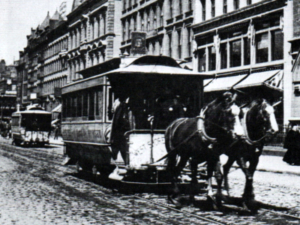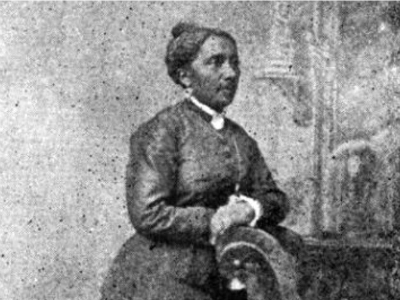In 2021, the Society is celebrating Black History Month every month, spending the year looking back at the impact of Black New Yorkers on the legal history of the state.
On July 16, 1854, a 24-year-old African American school teacher named Elizabeth Jennings and her friend, Sarah Adams, were on their way to church when they hailed a Third Avenue Railroad Company streetcar. It did not have a placard, and the women were immediately challenged by the conductor. Elizabeth refused to disembark and the streetcar continued on its route until the conductor sighted a police officer and requested his assistance. Between them, the two men roughly removed Elizabeth from the streetcar, and she found herself on the sidewalk with her “bonnet smashed and her dress soiled.”
 With support from the African American community, Elizabeth retained the (white) law firm of Culver, Parker and Arthur to represent her in a lawsuit against the Third Avenue Railway Company. The firm’s junior partner, Chester A. Arthur, had recently been admitted to the bar and the case was assigned to him. At the jury trial in Brooklyn (the headquarters of the company were located in Brooklyn), Arthur argued that provisions recently enacted in the Revised Statutes relating to common carriers applied to the case, and Brooklyn Circuit Court Judge William Rockwell instructed the jury that, “under the law, colored persons, if sober, well behaved and free from disease, had the right to ride the streetcars” and “could neither be excluded by any rules of the Company, nor by force or violence.” The all-male, all-white jury found for the plaintiff and awarded her damages of $225. She was also awarded $22.50 in costs. More importantly, the Third Avenue Railroad Company agreed to the immediate desegregation of its streetcar service.
With support from the African American community, Elizabeth retained the (white) law firm of Culver, Parker and Arthur to represent her in a lawsuit against the Third Avenue Railway Company. The firm’s junior partner, Chester A. Arthur, had recently been admitted to the bar and the case was assigned to him. At the jury trial in Brooklyn (the headquarters of the company were located in Brooklyn), Arthur argued that provisions recently enacted in the Revised Statutes relating to common carriers applied to the case, and Brooklyn Circuit Court Judge William Rockwell instructed the jury that, “under the law, colored persons, if sober, well behaved and free from disease, had the right to ride the streetcars” and “could neither be excluded by any rules of the Company, nor by force or violence.” The all-male, all-white jury found for the plaintiff and awarded her damages of $225. She was also awarded $22.50 in costs. More importantly, the Third Avenue Railroad Company agreed to the immediate desegregation of its streetcar service.
Other streetcar companies, however, retained segregated services and Elizabeth’s father, Thomas Jennings, an influential member of New York’s Black community and a successful businessman, founded the Legal Rights Association to challenge racial segregation in public transportation. By 1861, all New York public transit was desegregated. The strategy of the Legal Rights Association became a model for later civil rights organizations through its use of public-opinion campaigns, lobbying, civil disobedience and litigation to effect change.
Catch up on the rest of our Every Month is Black History Month posts.

